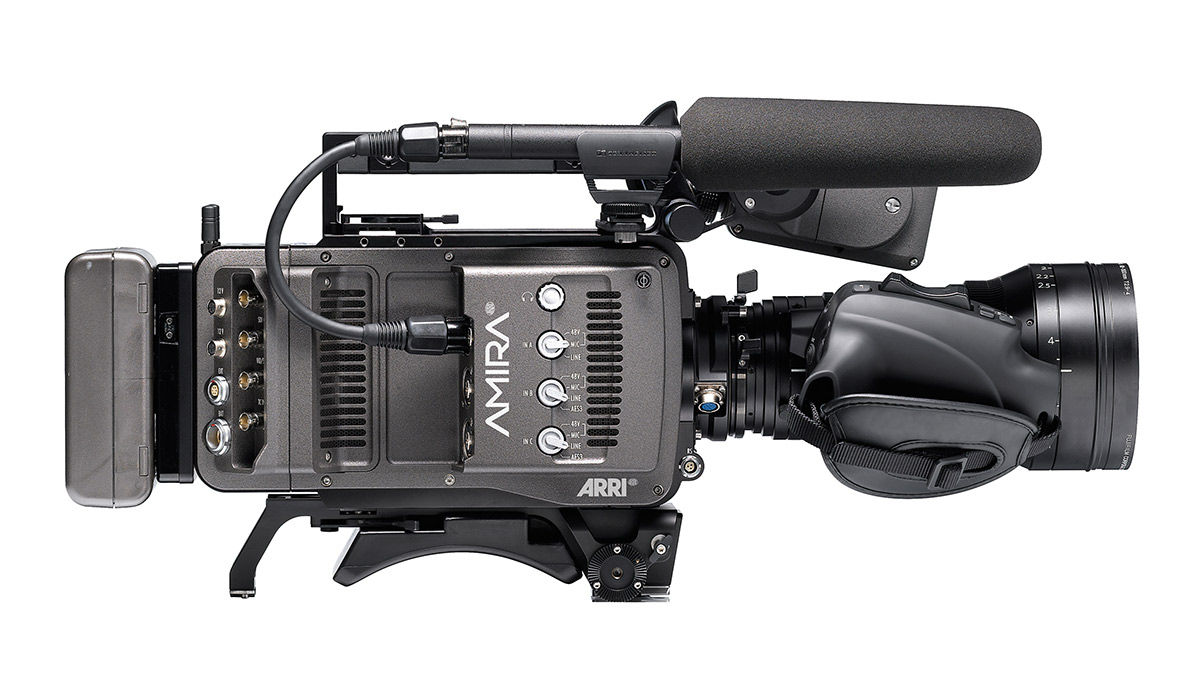Uncategorized |
Studio B Team
Lately, a lot of people have been calling and asking me about the differences between the Sony EX1 and the Panasonic HVX. What are the advantages and disadvantages of these two cameras? What benefits do I get from Sony vs. Panasonic?

This is what I tell ‘em:
It’s certainly not a comparison of apples and apples, but it’s not quite apples and oranges either. The cameras are as similar as they are different. To begin, the Panasonic doesn’t have a great imager, but it records at a high rate (100mb/sec) and has a trusted codec, DVCPRO HD, that’s “known” and used across the industry. The Sony has an amazing Fujinon lens and a fantastic 1080 imager, and although it uses a different logarithm to get to it’s record rate, it is ultimately recording at a lower rate than the Panasonic (35mb/sec). So, the Panasonic records a mediocre image at a high rate and the Sony records a great image at a more crushed rate.
So, where does that leave us? Are they the same? No. No, they are not the same…
Panasonic has been around, P2 has been around, DVCPRO HD has been around. It’s tried and trusted. DVCPRO HD has become, at the very least, the 720p standard and it has a clear foothold in the industry. Many networks and stations work in DVCPRO or DVCPRO HD; and all NLE’s support DVCPRO HD. So, there are general compatibility advantages while working in this format.
On the flip side XDCAM HD, Sony’s codec, is new and there isn’t the broad based support, yet, across the industry.However, Final Cut Pro has full support, along with Avid – you can make XDCAM become whatever format you need for delivery.
Panasonic’s P2 card system started this whole tapeless thing off, and Sony took a long time to catch up, but now they have done it right. The workflow for the EX1 has been nicely streamlined to work with new Macbook Pros and Final Cut directly. If you don’t have a Macbook Pro, you can use a slick card reader on any machine. Panasonic’s workflow is a bit “clunky” still, but works nicely in Final Cut Pro or Avids, just the same.
When deciding between the two cameras, the most important consideration is your project.Your camera selection depends on your comfort level with workflow, your preferences and your familiarity with certain brands.If you worked a lot with the old DVX-100, or other Panasonic cameras, the HVX will be easy to operate and navigate.If you are familiar with Sony gear, then the EX1 is a breeze to use.It’s a matter of preference and familiarity.
At this point, Sony’s EX1 is certainly giving Panasonic’s HVX a run for its money. But I would hesitate to disregard the HVX just yet. If you’re delivering to ABC, ESPN or Disney, the native DVCPRO HD is a great choice, as they operate on 720p and/or DVCPRO HD.
In terms of image quality – again, it is a matter of trading one thing for another.To my eye, and many others agree, that the color sampling of HVX is better.On the HVX, the colors out of the box are more vivid and easy to manipulate.However, with the imager’s resolution being less and a stock lens, the sharpness is reduced on the HVX.
This is where the EX1 comes in. This camera is super crisp and more sensitive to light overall. With its amazing Fujinon lens and its CMOS sensor, it is much sharper than the HVX. But the colors don’t pop quite the same. You can manually get in there on an EX1 and change a lot of this color, changing the matrix and white shading, etc. But for a ProSumer camera it’s not as straight forward, you need to know a bit more about broadcast and about video imaging in general.
Overall, I think both of these cameras have their place and have their purpose.There is an application that is appropriate for both cameras, for sure.The EX1’s workflow is sleek, but manipulating the camera is not as straight forward. The HVX is older and more established, and is a bit more user friendly, but its work flow is not as clean.
This decision is up to you as a camera operator. You have all types of factors – your general preference, the budget, the computer gear and workflow you have available, and your desired final deliverable. I think a general rule is: the EX1 is for those operators familiar to larger broadcast cameras like the F-900 or Digibeta, that need to take it down a notch; while the HVX is for those who are used to shooting with DVX or HDV and need to step it up a notch.
All of these things determine what is right. I wouldn’t say one is better than the other, right now. Talk to me in a year or two and I may have a stronger opinion one way or another. For now, give a call and we’ll have a chat about your project and figure out which is best for you.
READ MORE







